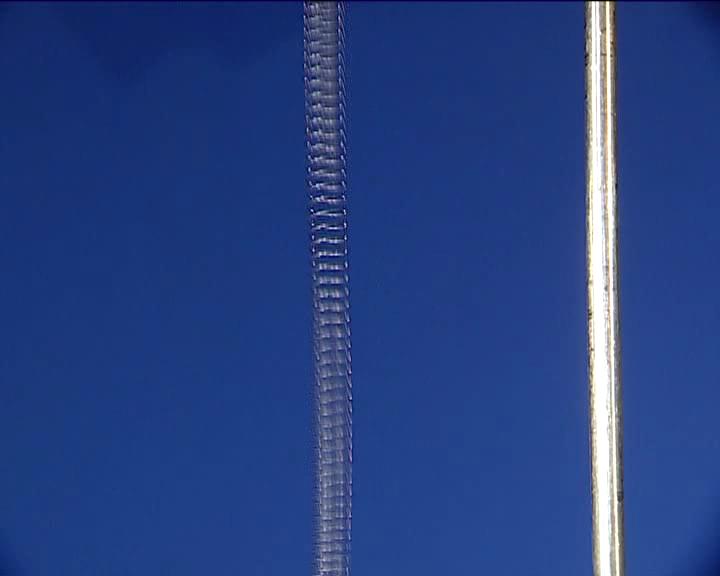„Longitudinális állóhullámok csavarrugón” változatai közötti eltérés
| (egy szerkesztő egy közbeeső változata nincs mutatva) | |||
| 9. sor: | 9. sor: | ||
== Longitudinal Standing Waves == | == Longitudinal Standing Waves == | ||
| − | + | We fix one end of a coil spring which is long in comparison to its diameter. We attach the other end to a vibration generator, which causes oscillations along the logitudinal axis. The thusly acheived longitudinal waves, when they have the right frequency form standing waves. If we examine the spring, in some places we will see its spirals clearly, in other places they will appear blurred. We see them clearly int he nodes, as these areas have little or no amplitude. We see them blurred at the antinodes, since there the oscillation has a large amplitude. At different frequencies, the distances between nodes will be different. | |
</wikitex> | </wikitex> | ||
A lap jelenlegi, 2014. március 9., 13:36-kori változata
Az elhangzó szöveg
Egy a keresztirányú méreteihez képest hosszú csavarrugó egyik végét rögzítsük mereven. A másik végét egy rezgéskeltőhöz rögzítsük, amely a rugó hossztengelyében végez rezgéseket. Az így keltett longitudinális hullámok meghatározott frekvenciákon állóhullámokat eredményeznek. A rugó hosszában vizsgálódva a rugó meneteit hol élesnek, hol pedig elmosódottnak látjuk. Élesnek látjuk a csomópontokat, mert azok rezgésének amplitúdója kicsi illetve nulla. Elmosódottnak látjuk a duzzadó helyeket, mert itt a rugó mozgása nagy amplitúdójú. Különböző frekvenciákon a csomópontok távolsága különböző.
Longitudinal Standing Waves
We fix one end of a coil spring which is long in comparison to its diameter. We attach the other end to a vibration generator, which causes oscillations along the logitudinal axis. The thusly acheived longitudinal waves, when they have the right frequency form standing waves. If we examine the spring, in some places we will see its spirals clearly, in other places they will appear blurred. We see them clearly int he nodes, as these areas have little or no amplitude. We see them blurred at the antinodes, since there the oscillation has a large amplitude. At different frequencies, the distances between nodes will be different.
